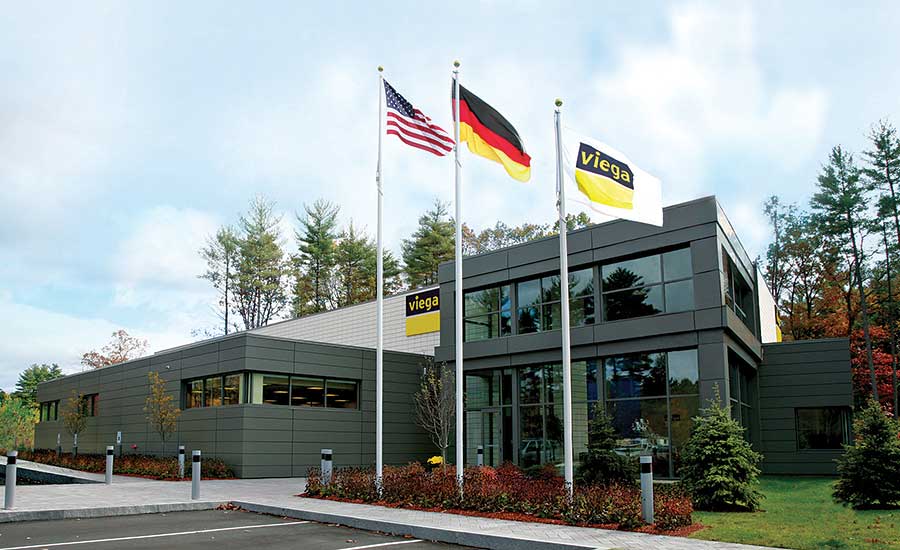
The Viega training facility, located at the company's headquarters in Broomfield, Colorado, offers techs the opportunity to learn how to troubleshoot and repair hydronics systems with the proper attitude and approach. Photo credit: Viega
Zen and the art of hydronics troubleshooting
Never assume you know the problem before you investigate.
The 1970s bestseller “Zen and the Art of Motorcycle Maintenance: An Inquiry into Values” used the author’s experience repairing a motorcycle on a cross-country trip to explore competing approaches to life.
Perspective, he believed, was key. The mindset and attitude with which we approach tasks can determine how successfully the work gets done and whether the time spent is seen as worthwhile or just drudgery.
Similarly, when we teach techs how to troubleshoot and repair hydronics systems, we stress the importance of preparation and approaching the job with the correct mindset while following the appropriate procedures and checklists. While we don’t promise enlightenment at the end, it should result in a hydronics system that is back in tune with the universe.
At the beginning of our seminars in our Colorado and New Hampshire centers, we teach techs the following lessons:
-
Always maintain a positive attitude. Troubleshooting is an opportunity to develop and employ your skills;
-
Don’t get frustrated. Troubleshooting can be a long process, which sometimes involves backtracking and false starts;
-
Understanding how the system is supposed to work is key to getting it back to that state;
-
No matter how familiar you are with the system, consult the operating manual, troubleshooting guide, piping and wiring schematic, etc.;
-
Don’t be too stubborn to call technical service if you get stuck;
-
Be sure your tools are in good condition; and
-
Give yourself as much light as possible and get as comfortable as you can. You’re likely to be there awhile.
Diagnosing the problem
Hydronics systems can be broken down into two sub-systems: Electrical (power source, wiring, switches, sensors and loads, control panels, outdoor reset and mixing control) and piping (general layout, component placement and piping theory, such as series, parallel and primary/secondary piping).
The problem could be within one system or both; a fault in one system could cause problems in another. The problem could be mechanical, such as a broken component; it could be related to design or installation or be caused by something external, like the power supply. And, sometimes, fixing one problem causes another.
Another point we stress is assumptions are the enemy of successful troubleshooting. It’s only natural that, when faced with a problem, we start guessing at the cause and solution. Sometimes, we’re right; but often, we’re wrong.
Never assume you know the problem before you investigate. Never assume that a pipe or wire is going where it should go. Never assume a system is installed correctly. Never assume the electrical system is the problem; it might be the piping or design. Investigating and diagnosing is always better than assuming.
Of course, as important as it is to have the correct attitude and approach, you won’t get far without the necessary tools. We recommend the following: Multimeter with AC voltage, DC voltage, AC amperage and resistance; line voltage AC sensor; alligator clips to jump out switches or controls; small flathead and phillips screwdrivers for those tiny control terminals; pressure gauge with hose thread adapter; various pliers, including needle nose and slip joint; flashlight (freestanding); drop light and extension cord; strap-on thermometer; infrared thermometer (optional); and 2-3 double-ended washing machine hoses for purging.
Having the right mindset and tools is also not enough for troubleshooting. You also need to have a logical process to follow from start to successful finish. Broken down, it looks like this: Prepare a checklist for every job; know the order of operations of the system; begin at the beginning because starting in the middle usually wastes time; and use troubleshooting charts and wiring schematics. Additionally, knowing how to use your multimeter properly will make charts easier to use.
Always ask questions
Asking questions is a great way to get answers. Ask the homeowner or building manager the following: Has this problem happened before? If so, is it intermittent or constant? How old is the system? Has anyone worked on or near the system or any components recently? Have there been any power failures or surges?
Then, ask yourself these questions: Is there power going to the heat source and is it on? Is the thermostat within 3° F of the room temperature? Is there fuel to the heat source? Is there pressure in the heat system? Is the heat source running or up to temperature? Is there a demand to the boiler? Is the circulator(s) running?
The answers you get will go a long way toward helping you diagnose and correct the problem. Lastly, don’t settle for the quick or temporary fix when something more is called for. In “Zen and the Art of Motorcycle Maintenance,” the author teaches that a quality solution is one that solves not only the problem at hand, but the overarching cause of it. Keeping that in mind will lead to better results and happier customers.
